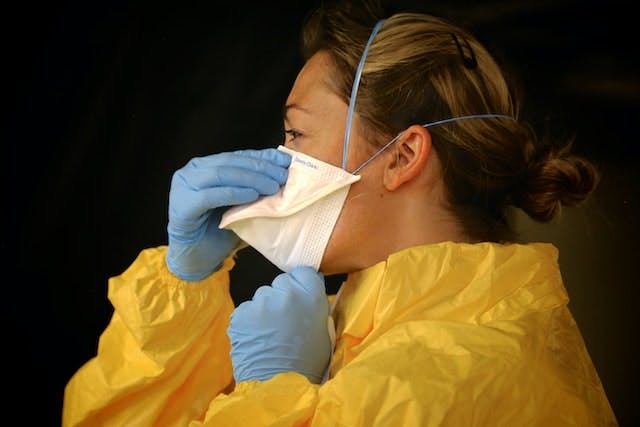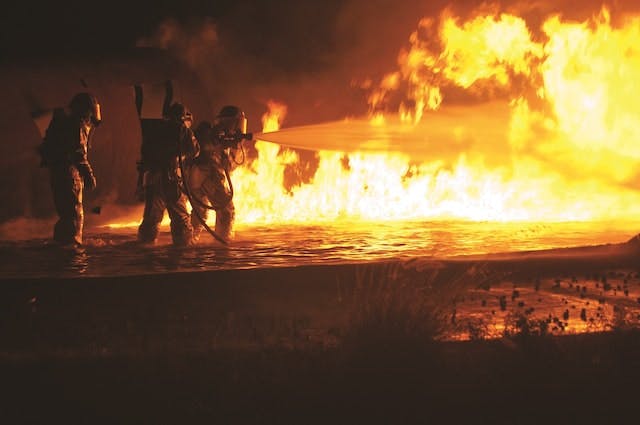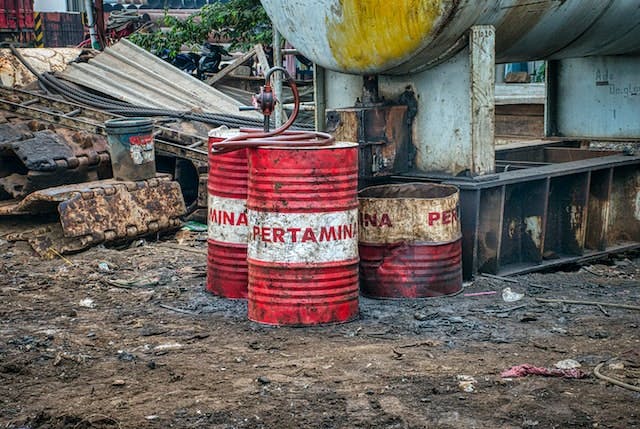10 OSHA required annual training list

Certain OSHA regulations call for annual training to protect workers from work-related hazards. By having these in place, you can detect safety hazards in your business. It also gives you the tools and methods to help resolve or reduce such safety issues while maintaining compliance with all laws and regulations.
OSHA required annual training #1 - Machine Guarding (29 CFR 1910.212)
This training covers the hazards of machine guarding and how to protect workers from injuries caused by machinery. This is because moving machine parts can result in serious occupational injuries like crushed fingers or hands, amputations, burns, or blindness. This is why this OSHA required annual training is important.

To protect workers from these avoidable injuries, safeguards are crucial. Any component, feature, or operation of the machine that could lead to harm must be protected. Hazards must be eliminated or controlled when machine operation or unintentional contact results in injury to the operator or people nearby. The different risks associated with mechanical motion are discussed in general on this page, along with methods for worker protection.
To equip your teams with the necessary knowledge, you can deliver free machine guarding training courses as part of your OSHA online training courses from EdApp’s free course library to supplement your OSHA training manual. They’re editable and customizable so you can add information specific to your organization.
Sign up for Free* and Start Using the best OSHA compliance tool today!
*Up to 10 users
OSHA required annual training #2 - Electrical Safety (29 CFR 1910.303)
Employees must get training and become familiar with the skills and procedures required to distinguish exposed live parts from other electric equipment. This also includes being able to determine the nominal voltage of exposed live parts in order to comply with OSHA training standards for electrical safety. Additionally, they must be aware of the boundaries and corresponding voltages to which workers will be exposed.

With EdApp's Rapid Refresh feature, you can create quizzes that can be turned into fun and engaging games to test your team’s knowledge. Watch them tap, swipe, and drag their way through questions, making learning a fun experience. And, with a leaderboard to show off their skills, they'll be even more motivated to succeed.
OSHA required annual training #3 - Fall Protection (29 CFR 1910.28)
Falls are a leading cause of workplace injuries and deaths. This is why fall protection is part of OSHA training requirements. This training teaches workers how to use fall protection equipment correctly and how to identify and avoid fall hazards.

As fall protection is an essential part of workplace safety, using fall protection equipment and training workers on how to use it can help employers prevent serious injuries and deaths.
OSHA required annual training #4 - Personal Protective Equipment (PPE) (29 CFR 1910.132)
Your teams should receive training on how to use personal protective equipment (PPE), which is yet another OSHA training requirement. Particularly, they need to know when, what, and how to correctly put on, take off, adjust, and wear PPE. The restrictions placed on PPE as well as its proper use, maintenance, and disposal should be included in their PPE training.

Before being permitted to do work involving the use of PPE, employees must have a basic understanding of these subjects. An employee has to be retrained when there are changes to the workplace or equipment, a lack of knowledge or skills, or both.
OSHA required annual training #5 - Respiratory Protection (29 CFR 1910.134)
Similar to PPE, you must give your staff effective and clear OSHA compliance training if they’re required to use respirators. Workers need to understand the need for respirators and how wrong usage might damage the equipment. They should be taught about the respirator's capabilities and limits, as well as how to use it in an emergency and how to put it on and take it off.

Retraining should follow when modifications are made to the workplace or respirator, when knowledge gaps are discovered among employees, or when circumstances necessitate it.
OSHA required annual training #6 - Bloodborne Pathogens (29 CFR 1910.1030)
Bloodborne pathogen regulation is under the toxic and hazardous substances category because it protects workers from exposure to bloodborne pathogens. Bloodborne pathogens are viruses, bacteria, or parasites that can be transmitted through blood or other bodily fluids. Exposure to bloodborne pathogens can lead to serious health problems, including HIV, hepatitis B, and hepatitis C.

With the known risks, the Bloodborne Pathogens OSHA training is an important tool for protecting workers from exposure to bloodborne pathogens. It requires employers to take steps to prevent workers from being exposed to bloodborne pathogens. By following the annual training requirements of this standard, employers can help to keep their workers safe and healthy.
OSHA required annual training #7 - Fire Brigade (29 CFR 1910.156)
OSHA fire protection and fire brigade requirements are important because they help to prevent fires and protect workers in the event of a fire. These requirements cover a wide range of topics, including fire prevention planning, fire detection and alarm systems, fire suppression systems, and fire brigade training.

By following OSHA fire protection and fire brigade requirements, employers can help create a safe and healthy workplace for their employees. This can reduce the risk of fire-related injuries and deaths, and it can also help to protect against property damage.
OSHA required annual training #8 - Lockout/Tagout (LOTO) (29 CFR 1910.147)
A series of procedures known as lockout/tagout (LOTO) is used to make sure that machinery handling potentially hazardous energy is turned off, rendered unusable, and de-energized. The systems' upkeep and repairs can also be done in a secure manner.

One of the OSHA training requirements is to train your teams so that everyone’s aware of your LOTO procedures. Additionally, you must make sure that the tags used in your procedures are clear to see, constructed of materials that can resist harsh workplace circumstances, and are legible and intelligible.
OSHA required annual training #9 - Hazardous Waste Operations and Emergency Response (HAZWOPER) (29 CFR 1910.120)
HAZWOPER training is part of the OSHA required annual training list as hazardous substances can be harmful to human health and the environment. They can also cause a variety of health problems, including cancer, respiratory problems, and skin irritation.

This training is needed to protect workers from exposure to hazardous substances and to prevent environmental contamination. In essence, HAZWOPER sets forth a number of requirements designed to protect workers from exposure to hazardous substances. It’s necessary to prevent accidents and injuries, to protect the environment, and to comply with the law.
OSHA required annual training #10 - Occupational Noise Exposure (29 CFR 1910.95)
Occupational Noise Exposure OSHA training requirement is an important standard because it protects workers from the harmful effects of noise exposure. Noise can cause hearing loss, which can lead to difficulty communicating, social isolation, and even depression. The standard sets limits on noise exposure and requires employers to implement a hearing conservation program to protect workers. This program typically includes noise monitoring, audiometric testing, and the provision of hearing protection devices.

Including this topic helps to ensure that workers are protected from the harmful effects of noise exposure. By following the requirements of the standard, employers can help to prevent hearing loss and other health problems, and make sure that their workers are able to hear well and communicate effectively.
Author
Gabrielle Rivera
Gabrielle is an eLearning content writer for SC Training (formerly EdApp), a microlearning solution designed for today's digital habits. She creates content about cutting-edge learning technologies and resources to help companies deliver great training experiences. When not absorbed in writing, she spends her time playing video games and reading books.
